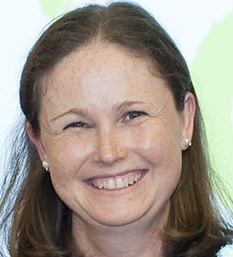
Watch Dr Michelle Farrar accept her research grant and hear a bit about the project.
Project Summary:
Establishing an Australian pediatric peripheral neuropathy biobank : a rich future scientific research resource.
Peripheral nerve diseases result in progressive muscle weakness and wasting, and many with childhood onset may lead to significant disability and reduced survival. Spinal muscular atrophy (SMA) is a noteworthy exemplar, characterised by progressive muscle weakness and is the leading inherited cause of infant mortality. The therapeutic landscape for SMA is being transformed, with the first disease modifying treatment that may extend quality and quantity of life reaching children with SMA from June 2018, following PBS listing in Australia. Notwithstanding this milestone, there are many uncertainties regarding treatment response, effects and long term outcomes across a broad clinical population. There are critical gaps in identifying reliable, relevant, sensitive and standardised biomarkers across the SMA spectrum. Essential to supporting ongoing SMA/neuropathy research and future therapeutic development is the availability of human bio specimens. As such, it is essential to establish specific research infrastructures to ensure collection and management of high-quality samples and data.
The present study is designed to address these issues by establishing an Australian biobank for paediatric peripheral nerve disorders, with an initial focus on spinal muscular atrophy (SMA). This will provide a rich resource for future studies, to expand scientific knowledge regarding pathophysiology and treatment responses, extending our clinical and neurophysiological prospective ‘new natural history’ studies. The present project is built upon years of strong collaborative work and represents a key step essential to further interdisciplinary innovative research.
Funding will be utilised to support a research co-ordinator within the neuromuscular research team to establish the collaborative biobanking programme to support long-term biomarker studies. The goal is to implement the infrastructure, capability and standard operative procedures to initiate a long-term programme of paediatric peripheral neuropathy biological sample collection and storage. This will provide a rich resource for numerous studies to guide future therapeutic development.
Outcome:
The Brain Foundation Research Grant has greatly enabled us to establish a biobank of 300 biological samples from patients affected with SMA at Sydney Children’s Hospital, Randwick in a period of 12 months. These specimens (cerebrospinal fluids and serum) were analysed to complete proof of concept studies utilising high throughput protein and gene sequencing technologies.
Preliminary findings identified a panel of biomarkers involved in various molecular and biological processes of SMA. These are involved in protease binding, lyase activity, cysteine-type endopeptidase inhibitor activity, neutrophil degranulation and amyloid fiber formation. Some of these protein species have been previously identified in other research as possible biomarkers for neuropathies, including amyotrophic lateral sclerosis.
Using gene technologies, we identified genetic signatures as a response to nusinersen treatment and the potential of these miRNAs to monitor disease progression and response to therapeutic intervention. With new SMA therapeutics on the horizon, our findings indicate the potential clinical application of these genetic signatures as promising non-invasive biomarkers for this disease.
We will promote ongoing collection of biological data and utilise banked samples to carry out molecular work to expand scientific knowledge regarding pathophysiology and treatment responses. Taken together, this will provide a rich resource for future studies and enhance collaboration for SMA research nationally. The present project represents a key step essential to translate research into clinical practice and to drive improved clinical outcomes and achieve best care for children with SMA.
We thank the Brain Foundation for the generous support of our research.


 The Brain Foundation is the largest, independent funder of brain and spinal injury research in Australia. We believe research is the pathway to recovery.
The Brain Foundation is the largest, independent funder of brain and spinal injury research in Australia. We believe research is the pathway to recovery.